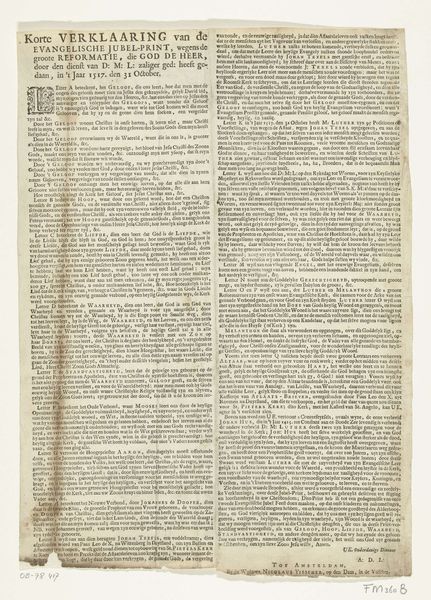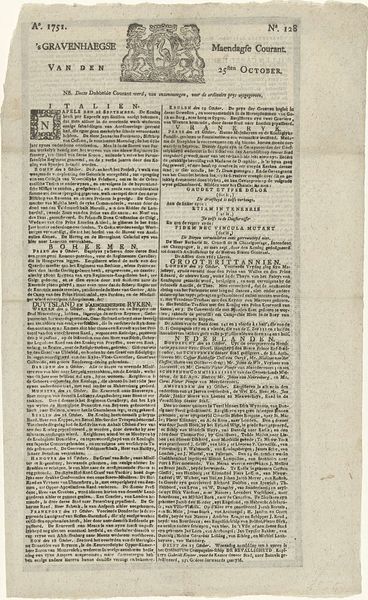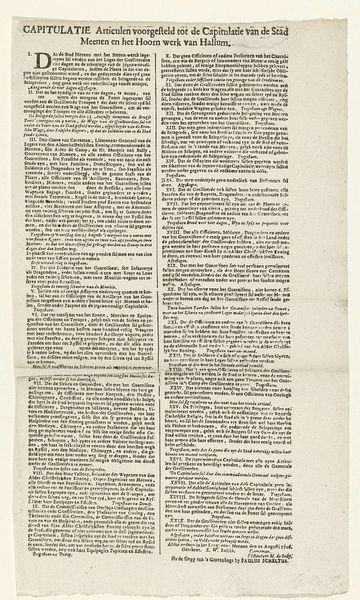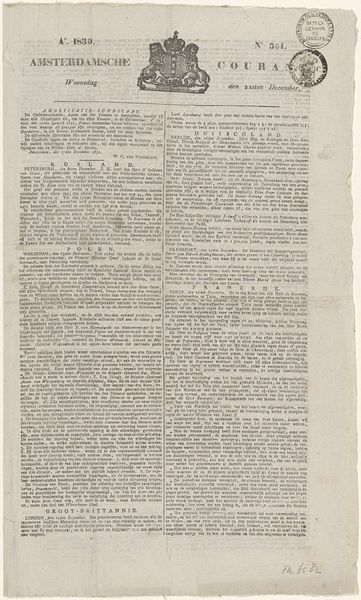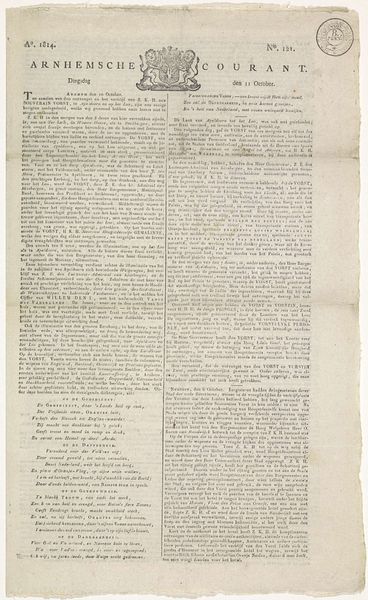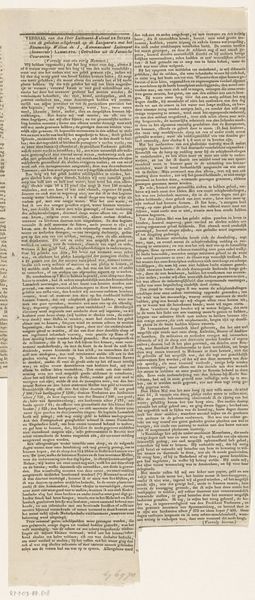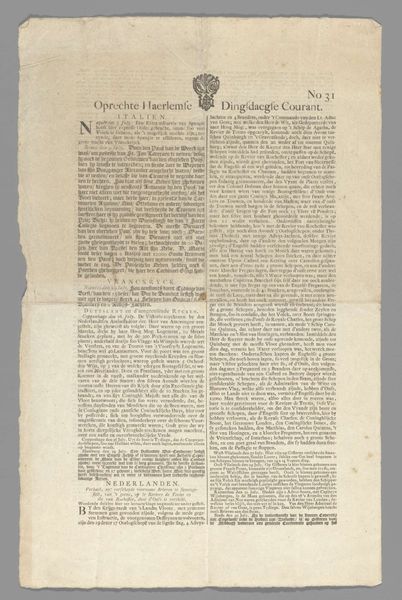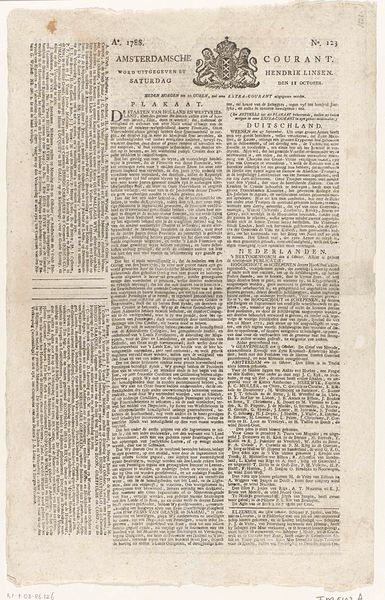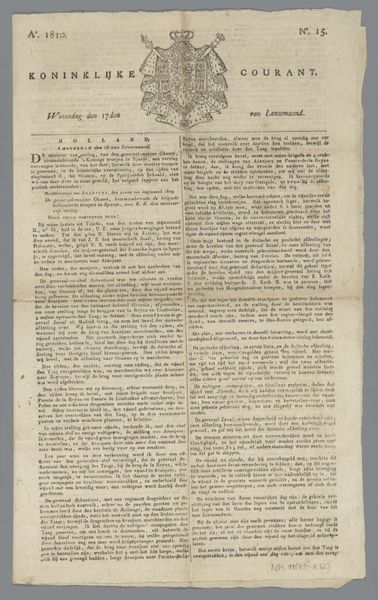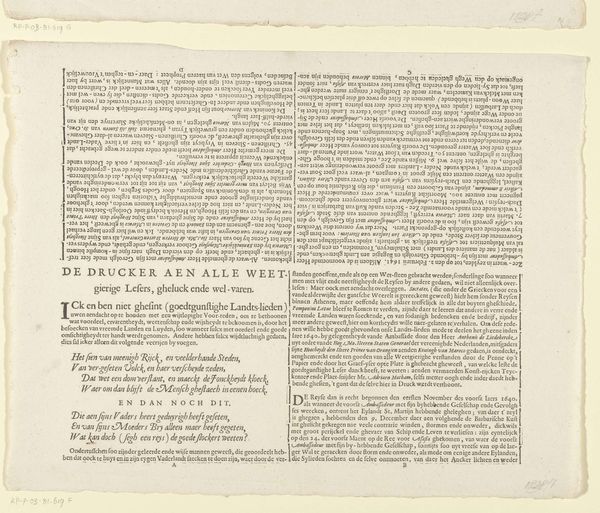
print, paper, typography
#
baroque
#
dutch-golden-age
# print
#
paper
#
typography
Dimensions: height 360 mm, width 225 mm
Copyright: Rijks Museum: Open Domain
Printed in 1742 by Izaak Enschedé, this newspaper, the "Oprechte Haerlemse Courant," bears a coat of arms at its masthead. The lions flanking the shield are not mere decoration; they are ancient symbols of courage and guardianship, echoing heraldic traditions stretching back to medieval Europe. These regal beasts, guarding symbols of power, remind me of similar motifs found across diverse cultures. Lions appear in ancient Mesopotamian art as protectors of sacred spaces and rulers, a tradition echoed in dynastic emblems worldwide. Yet, over time, the lion’s symbolic meaning has shifted. In some contexts, it embodies strength and nobility; in others, it represents imperial might, often evoking complex emotions in those subjected to such dominance. The presence of such imagery in a newspaper, a medium intended for mass consumption, highlights how collective memory and subconscious processes shape our perception of authority and power. It subtly reinforces the structures of society while engaging our subconscious desire for protection. The lions resurface, evolving from ancient guardians to symbols of civic identity.
Comments
No comments
Be the first to comment and join the conversation on the ultimate creative platform.
